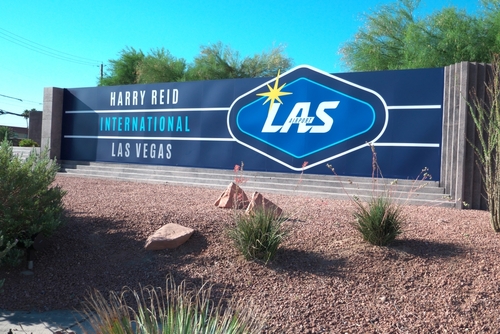
The Transportation Security Administration (TSA) reported successful safety operations during Super Bowl LVIII in Las Vegas, Nev., securing the routes in and out of Harry Reid International Airport (LAS) and continuing their efforts once the game was over.
At LAS, the TSA readied for a surge of departing travelers in the wake of the game – the finale to more than a year’s worth of planning. Officers fully staffed checkpoints and deployed resources accordingly to screen 103,978 travelers the Monday after the game. It was a new record for people screened by TSA at LAS over a single day, with officers funneling the crowds through five security checkpoints in two terminals.
Despite the massive turnout, the highest recorded wait time for processing at any point of the day was 12 minutes for standard screening, and just four minutes through TSA PreCheck. Many also rushed the gates early, with the largest number of travelers seen between 5 a.m. to 6 a.m. and 8 a.m. to 9 a.m., with 7,700 and 7,600 people screened, respectively. On top of this, TSA screened more than 65,700 checked bags.
Even in the lead up to the mass exodus, TSA kept four of its five security checkpoints open 24 hours a day, from Sunday onward. That fifth opened Monday morning, as security screening officers from other airports were brought in to assist local staff.
“It has been a spectacular week of activities that brought tens of thousands of people to Las Vegas in anticipation of the Super Bowl game and related festivities,” Karen Burke, TSA Federal Security Director for Nevada, said. “With the game behind us, TSA made good on its commitment to deliver efficient security operations and excellent customer service to all those who were screened at LAS Monday. The months of coordination and planning paid off. I am proud of what the TSA team accomplished and we are grateful for the support of all our transportation stakeholders and partners in making this record-setting day a success.”
Explosives detection canines, local, state and federal law enforcement agencies, and readied TSA Visible Intermodal Prevention and Response (VIPR) teams were also in the area leading up to and after the Super Bowl. The canines helped expedite screening, while the VIPR teams set up at transportation hubs and, using a risk-based framework for deployment, sought to deter any terrorist activity.




